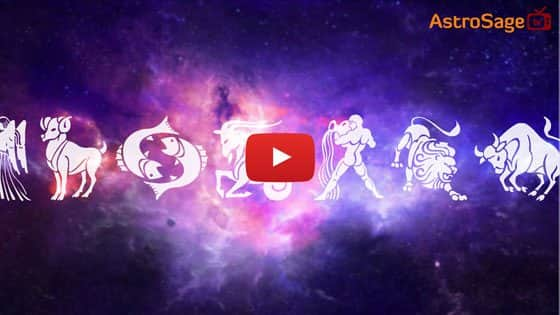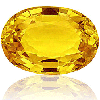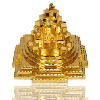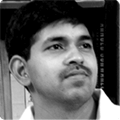Yoga Breathing vs Deep Breathing

Deep breathing as taught by the various systems of medicine and of physical gymnastics in the East and the West differs largely in its technique, its reflex values, and its penultimate objective from the methods of breathing taught by Yoga. It is evident from even the few simple processes discussed previously that yoga breathing offers more favorable physiologic conditions for deeper inspirations and expirations than the ordinary deep breathing generally recommended. Among the many important considerations relative to the respiratory functions, those which exert great influence upon the whole of animal economy are the following: [a) absorption of oxygen, (b) removal of carbon dioxide, (c) dynamic equilibration, (d) volume of arterialised blood, (e) sedative nervous effects, and (f) maximum vital index for longevity.
Absorption of Oxygen
From the hygienic point of view alone, the purpose of all breathing exercises should be the assimilation of maximum amount of oxygen with the minimum waste of energy. The natural contour of the controlled abdomen which is a prerequisite to the yoga breathing - contrary to the ordinary breathing practised with protracted or relaxed abdomen - contributes to a greater intake of air than otherwise. Weber assures us that through deep inspirations a remarkable improvement in the heart's nutrition and action is caused, besides the nutrition and efficiency of the lungs themselves, which undergo in old age a kind of atrophy. He further observes that the depth of inspiration is considerably improved by keeping the abdominal muscles controlled during the process of inhalation. This statement may be substantially corroborated by careful control experiments onintrathoracic, intrapulmonic and intra-abdominal pressures during yoga breathing.
Moreover, during ordinary deep breathing, generally recommended or practised with vigorous exercises of one type or another, the oxygen use runs beyond the power of the respiratory and circulatory organs. This oxygen debt overbalances the good that may be derived out of deep breathing, or, even if performed in moderation, does not necessarily produce the healthful effects on the respiratory organs. In yoga breathing, however, the restful pose and attitude of the mind, devoid of dynamic, movements, cause no oxygen debt, but, on the contrary, the large intake of complemental air still rich in oxygen - helps to maintain the alveolar air fully sutured with reserve of 22per cent, oxygen, in other words, with about 6per cent, of extra oxygen above the normal average which is 16 per cent, automatically maintained in the alveolar air (Roscnau). These and other facts of chemistry and metabolism prove conclusively that the yoga technique and methods of breathing are physiologically quite sound and even superior to other deep breathing exercises in so far as the oxygen value and hygienic benefits are concerned.
Removal of Carbon Dioxide
Haldanc, Vierordt, Speck and generally all physiologists contend that the amount of air ordinarily exchanged in each act of breathing, tidal air, is not sufficient to completely empty the lungs of their contents. That a certain amount of air always remains constant in the air cells of the lungs and that this residual air is not expelled by the air cells even during the efforts of deepest expiration. But the process of retention, as in kumbhaka, however, makes the concentration of carbon dioxide possible in the air cells of the lungs a condition so necessary for proper ventilation in the alveolar air. This retention, when followed by recaka during forced exhalation removes through supplemental air a very large amount of carbon dioxide thus concentrated; and the deep inspiration immediately following offers an abundant supply of complemental air, thus causing a change in the volume and composition of the residual air.
Again, the conditions which encourage a large output of carbon dioxide., exercise and mental labor etc. being absent during the process of yoga breathing, the amount of carbon dioxide in a given time is lessened thereby tending to prolonged respirations which, in turn, help to diminish the waste from the body and give tone to the respiratory and circulatory organs (Paul).It is thus evident that during yoga breathing, the output of carbon dioxide is less, the respirations are prolonged, and the concentration and amount of carbon dioxide so affected as to facilitate its removal more effectually than is possible through the ordinary deep breathing exercises.
Dynamic Equilibration
One of the aims of yoga breathing is to produce inner, organic and natural harmony - a condition of normal balance - and regulation of the respiratory movements by alternate breathing. This dynamic equilibration is hardly scientifically achieved by the ordinary methods of deep breathing which fail to stimulate maximum coordination within. According to yoga physiology, there are two sets of bio nervous (pranapana vayus) influences which cause and control the act of respiration. The one which is called positive is produced due to solar (surya) influence and breathing through the right nostril, whereas the negative counterpart is produced by lunar (candra) influence from breathing through the left nostril.
It is further maintained that, by coordination between these two vital biodynamic currents, all life activities are sustained; and that it is an imperative condition of health that they should be equally balanced. The yoga method of alternate breathing, in contrast to the ordinary deep breathing, produces sedate harmony within me air - passages, the lungs and the nervous system and thus regulates and unifies the breathing movements and, therefore, the functions of bionergy (pram) which, in fact, is one of the physiologic objectives of Hathayoga.
Volume of Arterialised Blood
Due to favourable pressure changes during yoga breathing - changes which are more pronounced than they arc during ordinary breathing, whatever the nature of depth be - a very large volume of blood is arterialised with each respiration. Howard maintains that, "Mere breathing, deep breathing just to develop big chest capacity is valueless unless the inhaled air can reach everywhere - every tiny ceil in the body. Physiologically, it is impossible to derive the utmost benefit of arterializations unless deep breathing is followed with increased pulmonary circulation. That this is possible is admitted by modern physiologists. Thus, "The fall of intra-thoracic pressure has a favourable influence on the flow of blood from the extrathoracic veins into the intrathoracic veins, the right side of the heart and the cardiopulmonic vessels. The flow of lymph from the lower portion of the thoracicduct into the upper portion is also increased."
It is truism that the health, tone, and vigour of the body depends mostly upon the quantity and quality of the blood circulating throughout the system. In the yoga breathing due to favourable coordination between the positive and negative pressures in the intrathoracic cavity, general and pulmonary circulation is likewise improved both in quantity and quality even without the aid of muscular exercise which generally involves considerable waste of both the body tissues and bionergy.
Sedative Nervous Effects
Deep breathing, which was originally confined to and associated with the process of concentration - during the period of the earlier Upanisads, about b. g. 700 - was later introduced by the ancient practical yoga teachers like Yajnavalkya, Matsyendra, Goraksa and others also as a hygienic and preventive measure against a number of diseases.
Scientific Yoga, therefore, lays great stress upon the value of deep breathing, more so with regard to its nervous influence, and also as an aid to mental and psychic culture rather than to its healthful physiologic effects promoting longevity. Thus, apart from its value to the body, deep alternate rhythmic yoga breathing has also its psychological counterpart. That there should be some affinity between mental activities and respiration seems quite natural when it is realized that, with every breath we take, the brain cerebrr.tes unconsciously and involuntarily. Few people know, and fewer still care to know that every change in the mental state is accompanied by a corresponding change in the volume, force and rhythm of respiration and that such a continual interaction between the brain and the lungs can be safely utilized for supraphysical and supramental achievements. The Yogins maintain that the rise and fall in the depth of respiration cause a corresponding change in the activity of the brain. For example, during deep and rapid breathing, the blood circulation in the brain also becomes accelerated. It means quick and rich blood supply to the brain which, in turn, cannot fail to affect a rapid change in the mental modifications [citltavrtti). It has been Stated that, "He, who has controlled prana through, the respiratory system, automatically gains control over the activities of the mind-stuff (citta). In the like manner, he, who has gained control over the activities of the mind-stuff, automatically acquires control over prana and, thus, the respiratory movements. Both prana and cilia are spoken of as one biomental unit.
These sympathetic inter-relations between the breath and the mind are so distinct that, under certain conditions, they produce very remarkable phenomena. Stebbins observes that, "It is quite possible for the brain to be engaged in the most intense molecular action and the mind occupied in solving the problems of creation without the lungs responding to such emotions and thought, and sinking to their minimum action, but this can only be accomplished by skilful training. In other words, in a perfectly natural state the respirations will beat time, so to say, with the depth of thought or the power of emotion dominating the brain. When the thought-vibrations awaken into action the higher intellectual powers of the mind, the respirations sink lower and become slower and slower until in the ecstatic state of abstraction we almost cease to breathe."
Similarly, the affects of the mind on breathing have been very ably explained by Swedenborg. He remarks that, "Thought commences and corresponds with respiration. First, study to feel your thought. Thus when one entertains a long thought, he draws a long breath; when he thinks quickly, his breath vibrates with rapid alternation; when the tempest of anger shakes his mind, his breath is tumultuous; when his soul is deep and tranquil, so is .his respiration. But, let him make trial of the contrary; let him endeavour to think in long stretches, at the same time that he breaths in fits, and he will find that it is impossible."
The ancient yogins were fully aware of these psychic affects of prana through breath. It is thus stated in most of the practical yoga texts that breathing is lessened when the mind-stuff becomes absorbed, and that the mind-stuff becomes absorbed when the breathing is restrained. By the suspension of one, therefore, comes the suspension of the other. When both the mind-stuff and the breath remain controlled, blissful absoluteness is achieved. The best means for creating harmony and concentration within, therefore, is first to create harmony in breathing, and this could only be very effectively done through the various breathing methods some of which have already been described. Yoga takes aid of breathing essentially with a view to controlling the functions of bionergy, and, through such control, to gaining mastery over the mind. Modern re-searches fully corroborate this claim as also various other probabilities of interactions between mind and respiration. For example, during certain mental states or emotions?despair, hope, anger, fear and hate, etc.-the respiratory movements vary in such rhythm as to produce an equipoise of force. It is easy for an expert psychologist to tell you the state of your mind from the state of your respiration, just as the skilled physicians able to diagnose your physical ailments by feeling your pulse. This knowledge of interaction between the brain and the breath has been the common property of all ages. And it is on this foundation that a large number of rhythmic processes of respiration have been formulated by the ancient self-culture adepts, the yogins, who hoped to attain the peace of mind through the regulation of breathing movements.
Whatever the spiritual claims be, one thing nevertheless is true that the habit of deep, prolonged, rhythmic breathing, in due course, establishes a corresponding state of mental equipoise. And this saves much of the dynamic energy of the nerves wasted during physical or mental discord, excitement, and confusion. Prolonged, deep, rhythmic breathing thus acts as a great nerve tonic and ensures the health of the body and mind. But, as the sedative nervous effects of breath depend more upon the prolonged and restful respiratory acts rather than upon mere deep breathing, it is easy to discriminate between the relative chemical, tabolic and psychic effects of the active ordinary deep breathing (about six breaths per minute) in contrast to a complete round of yoga rhythmic breathing (about one breath per minute). In fact, it is not without scientific reason that in the East, the yogins in order to secure nervous quietude and mental poise took to special methods of breathing much different to those now known to the Westerners as deep breathing exercise.
Maximum Vital Index for Longevity
It is extremely regrettable that the word prana so frequently, discriminately, and persistently used in all the Sanskrit works - especially in those dealing with Yoga - has not been sufficiently or technically understood and interpreted by the Oriental scholars and students of practical Yoga. Even the so - called staunch and zealous exponents of Yoga - really, the imitators of this great Institute - have quite naturally misconceived this subject and interpreted the word prana as mere "breath" or, if stretched further, might at the most, agree to or prefer the use of the word "oxygen". Although lack of oxygen affects mental processes because of its effects on the brain, this gaseous element does not convey the full meaning of the word prana which is the energy evaluate of an organism. What, then, is prana? The right interpretation, to put it broadly, is this:
The use of the word prana in certain practical yoga works, only at a few places, meaning breath is symbolic of the various uses to which it has been subjected, and this particular interpretation a breath merely identifies one of its activities with respiration. Prana, according to the practical yoga technique and terminology does not at all mean breath, but means most certainly "the biomotor force" pervading the whole body - the most appropriate scientific term now being bionergy. In the human body, it (prana) pervades the entire being, and life is sustained exclusively because of it. In this capacity, it upholds the body by keeping together the various mind and body substances in essential harmony and unity through its manifold activities. What the orthodox physiologists refer to as vital force, life energy or life force (Scott), the biologists as the biomotor force (Haeckel) or, better still, bionergy(Dorland), and the modern scientists as "the flying energy in the body" (Stiles) - exactly corroborating the definition capalspada of the ancient yogins - is, in fact, the very prana referred to by scientific Yoga.
The specific function of this prana is motion and, because it moves, it is called prana {pranayam kurute eti pranah). Thus, it is the prana which operates in the sperm or sukra and the ovum rajas for if the prana had not acted at the time of conception, the embryo would not have developed or ultimately would not have led to the creation of a child. It is also held that this prana performs its functions in the human body only when it is nourished with food, water, air and light etc. Thus, we are told that when the food is taken, the water is drunk, or the air is inhaled, its fine essence becomes transformed into prana since it is both the cause and effect of them.
That the knowledge of this prana, its activities and control was a great advantage to the yogins in the evaluation and evolution of a man can hardly be denied, when it is realized that the modern sciences plead their ignorance and inability to fathom its mysteries. What at most Bertram! Russell can say about it is that "this 'chemical imperialism' is a curious chemical property which when mixed with suitable environment transforms a mass of dead matter into a mass of living matter. It is tins property which has made organic evolution possible. Stebbins honestly admits "that there has been a something extracted from the atmosphere besides the oxygen which is supposed to be the real basis of life, a something which science at present knowing nothing about, and which, consequently, she cannot explain.
The yogins, however, are able to demonstrate that through certain methods of deep and rhythmic breathing exercises both the general tone and vital index of the body are inordinately increased - to be sure, through the regulation, conservation and control of prana?and further, that the maintenance of maximum vital index ensure sufficient reserve vitality to stand as a great preventive against disease-dangers and thus helps to prolong life.
Astrological services for accurate answers and better feature
Astrological remedies to get rid of your problems

AstroSage on MobileAll Mobile Apps
AstroSage TVSubscribe
- Horoscope 2025
- Rashifal 2025
- Calendar 2025
- Chinese Horoscope 2025
- Saturn Transit 2025
- Jupiter Transit 2025
- Rahu Transit 2025
- Ketu Transit 2025
- Ascendant Horoscope 2025
- Lal Kitab 2025
- Shubh Muhurat 2025
- Hindu Holidays 2025
- Public Holidays 2025
- ராசி பலன் 2025
- రాశిఫలాలు 2025
- ರಾಶಿಭವಿಷ್ಯ 2025
- ਰਾਸ਼ੀਫਲ 2025
- ରାଶିଫଳ 2025
- രാശിഫലം 2025
- રાશિફળ 2025
- రాశిఫలాలు 2025
- রাশিফল 2025 (Rashifol 2025)
- Astrology 2025


































